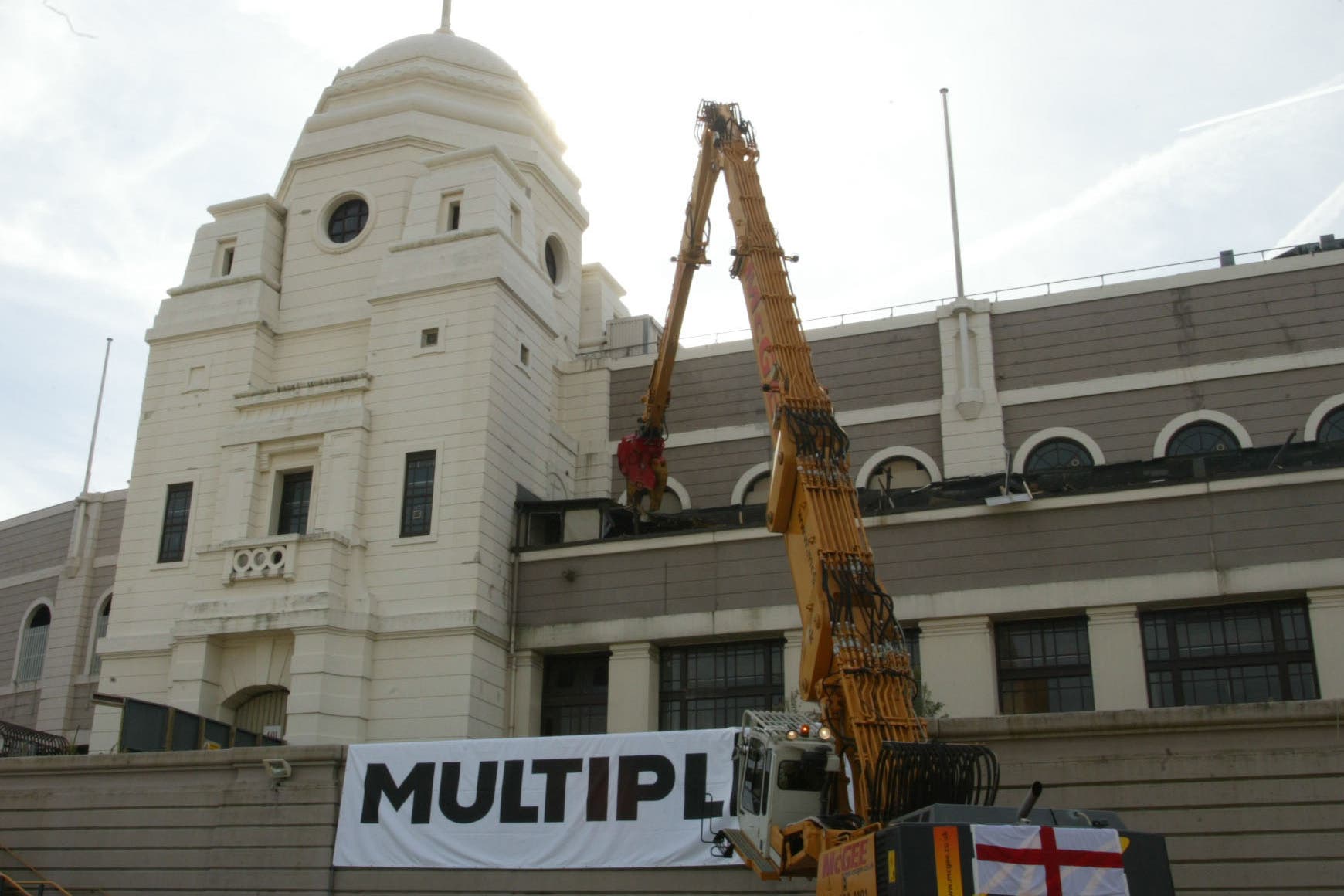On This Day in 2002: Bulldozers begin demolishing Wembley to mark end of era
The process of the old ground making way for a new national stadium started at 11.09am on a Monday morning.

Your support helps us to tell the story
From reproductive rights to climate change to Big Tech, The Independent is on the ground when the story is developing. Whether it's investigating the financials of Elon Musk's pro-Trump PAC or producing our latest documentary, 'The A Word', which shines a light on the American women fighting for reproductive rights, we know how important it is to parse out the facts from the messaging.
At such a critical moment in US history, we need reporters on the ground. Your donation allows us to keep sending journalists to speak to both sides of the story.
The Independent is trusted by Americans across the entire political spectrum. And unlike many other quality news outlets, we choose not to lock Americans out of our reporting and analysis with paywalls. We believe quality journalism should be available to everyone, paid for by those who can afford it.
Your support makes all the difference.Bulldozers began demolishing the old Wembley on this day in 2002, marking the end of an era for one of the most famous stadiums in the world.
At 11.09am on a Monday morning a 35-ton bulldozer called Goliath slowly began to turn the north London home of English football into rubble.
Work began on the operations and press room – the corridor linking the Twin Towers – as the process of the old ground making way for a new national stadium started.
After being built in 1923 to mark the Empire Games, Wembley had hosted an array of sporting events and pop concerts, including the 1966 World Cup final won by England, and Live Aid.
The new 90,000-seater stadium was, at that point, scheduled to open in 2006.
Adam Crozier, the FA’s chief executive at the time, said: “It has been a long haul to reach a successful outcome.
“It is great news for everyone involved in football. Players and fans can now look forward to enjoying the facilities at what will be the best stadium in the world.”
George Cohen, a member of England’s 1966 World Cup winning team, came to see for himself the end of the old stadium, and he said: “It is very sad that Wembley has gone.
“But you get over it because everyone has memories. It is going to be replaced by a much better stadium.”
The new Wembley eventually opened in 2007, staging that year’s FA Cup final in May, in which Chelsea beat Manchester United 1-0 after extra-time thanks to a Didier Drogba goal.
Join our commenting forum
Join thought-provoking conversations, follow other Independent readers and see their replies
Comments